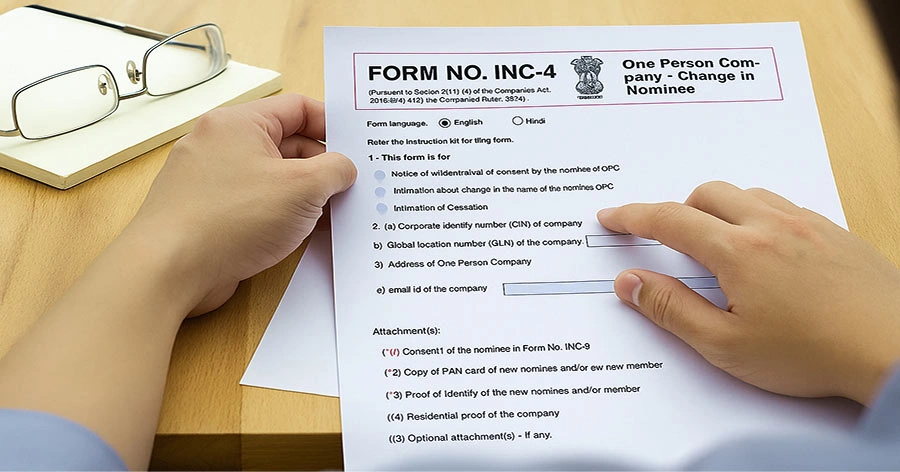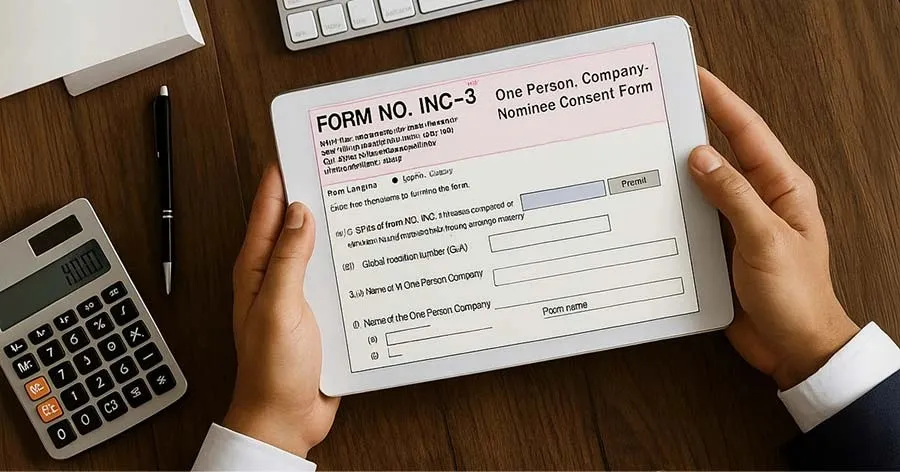
When a new company is formed, who really holds the power? Is it the founder who owns all the shares? Or is it the Managing Director? This common question often causes confusion. This is especially true in startups where founders act as both owners and managers. Understanding the legal difference between shareholders and directors is, therefore, one of the most critical concepts in business.
Many assume the roles are the same. This is a frequent misconception. However, the law treats these two positions very differently. A company director vs. a shareholder has unique rights, powers, and significant legal liabilities. Their legal standing and responsibilities are entirely different. In simple terms, a shareholder owns the company, while a director manages it.
This blog provides a clear comparison of shareholders and directors. It explores their legal framework under the Indian Companies Act, 2013. It also explains how individuals become directors of a company and the different types of directors a company can appoint. You will understand the differences between key shareholders and directors, including their rights, duties, appointment, and removal. It also covers practical scenarios and highlights the impact on compliance and governance.
What are the Key Differences Between Shareholders vs Directors?
Shareholders and directors are both essential to a company, but they have distinct roles and responsibilities. While shareholders provide the capital to own the company, directors are responsible for managing and running it. Understanding these two roles is crucial to clarifying who holds ownership, who makes key decisions, and how the company’s day-to-day operations are structured.
1. Role and Ownership vs Management
The most fundamental difference between a director and a shareholder is the role.
A shareholder owns the company. They invest capital to start and grow the business and take the risk of that investment. By buying shares, they gain ownership, but they do not run the company’s daily operations. Their role stays largely passive, focused on protecting and growing their investment.
A director, on the other hand, manages the company. Shareholders appoint directors to run the business on their behalf, creating a clear split between ownership and management. The directors also form the Board of Directors. This board makes strategic and operational decisions, develops business plans, hires key executives, and oversees company performance.
Now the question arises: can a shareholder and director be the same person? In many Indian companies, one person can act as both a shareholder and a director. This is common in startups, where the founder owns most shares and also manages the company, and the law also allows it. Even when one person holds both positions, the law treats their roles separately. They must act as a shareholder when making ownership decisions and as a director when managing the company.
2. Minimum and Maximum Requirements
Understanding the minimum and maximum numbers of shareholders and directors helps define the company’s structure and ensures legal compliance.
| Role | Type of Company | Minimum | Maximum |
| Shareholders | Private Limited Company | 2 | 200 |
| Public Limited Company | 7 | No upper limit | |
| Directors | Private Limited Company | 2 | As per Articles of Association (commonly 15) |
| Public Limited Company | 3 | As specified in the Articles of Association (no strict upper limit). |
3. Rights and Powers
Shareholders and directors possess different types of power within the company.
Shareholder Rights
A shareholder’s power is exercised through voting at general meetings.
| Right | Description |
| Voting Power | Shareholders exercise their power by voting at general meetings. |
| AGM (Annual General Meeting) | Shareholders approve annual accounts, approve dividends, and appoint/reappoint auditors and directors. They can also inspect minutes of general meetings. |
| EGM | Shareholders holding at least 10% of the paid-up share capital can call for an Extraordinary General Meeting to discuss urgent matters, such as changing the company’s name or core business. |
| Right to Dividends | Shareholders receive dividends only if the Board of Directors declares them. |
| Right to Information | Shareholders can inspect statutory registers and receive financial reports. |
| Right to Approach NCLT | Shareholders can approach the National Company Law Tribunal (NCLT) in cases of oppression or mismanagement under Sections 241–242 of the Companies Act, 2013. |
| Right to Transfer Shares | Shareholders can transfer their shares, subject to the company’s Articles of Association (AOA), in private companies. |
Director Rights
A director’s power relates to managing the business. These powers are granted by the Companies Act, 2013, and the Articles of Association (AOA).
| Right | Description |
| Management Decisions | Directors make decisions on business strategy, budgets, and hiring key personnel. |
| Contractual Authority | Directors can enter into contracts on behalf of the company. |
| Financial Powers | Directors can open bank accounts and borrow money, within limits set by shareholders. |
| Board Votes | Directors participate and vote in board meetings, which are separate from shareholder meetings. |
| Company Management | Directors manage the day-to-day operations of the company and ensure it operates efficiently and within the law. |
| Compliance | Directors ensure the company adheres to statutory and legal requirements, such as filing returns and maintaining proper accounts. |
4. Duties and Legal Liabilities
The director and shareholder difference becomes most clear when looking at their legal duties and responsibilities.
Shareholder Liability
Shareholders enjoy limited liability, which limits their financial risk to their investment in the company.
| Aspect | Details |
| Liability | Shareholders are only liable for the unpaid amount on their shares, if any. |
| Personal Asset Protection | Creditors cannot claim personal assets. Losses are confined to the initial investment. |
| Impact of Company Failure | Shareholders are not personally responsible for company debts beyond their investment. |
Director Liabilities
Directors carry higher legal duties and personal responsibilities:
| Duty Type | Details |
| Statutory Duties | Directors must comply with legal requirements such as filing returns, maintaining accounts, and paying taxes on time. Failing to meet these duties can lead to fines or penalties. |
| Fiduciary Duties | Directors must act honestly, prioritize the company’s best interests, avoid conflicts of interest, and refrain from seeking undue advantage or assigning their office to someone else. |
| Duty of Care | Directors must manage the company with skill, diligence, and prudence, avoiding negligence or careless decisions. |
| Personal Liability | Directors may face personal liability for fraud, negligence, or violations of statutory rules. Section 164 of the Companies Act, 2013, lists cases that can lead to disqualification. |
By law, shareholders focus on ownership and risk, while directors actively manage the company and safeguard its operations. This clear separation highlights why directors bear more responsibilities and accountability than shareholders.
5. Appointment, Removal, and Meetings
The process of joining and leaving the company is very different for each role.
| Role | Shareholders | Directors |
| Appointment | A person becomes a shareholder by subscribing to the Memorandum of Association (MOA) or by buying shares from an existing shareholder. | The first directors are named in the Articles of Association (AOA). Shareholders appoint subsequent directors in a general meeting. The board can fill temporary vacancies. |
| Removal | A shareholder leaves by selling or transferring their shares. They cannot be removed unless shares are bought back or transferred. | Shareholders can remove a director by passing an ordinary resolution at a general meeting (Section 169 of the Companies Act, 2013). |
| Meetings | Shareholders attend Annual General Meetings (AGM) and Extraordinary General Meetings (EGM) to vote on important matters. | Directors actively participate in Board Meetings to make strategic and operational decisions. |
6. Practical Scenarios and Control Dynamics
The interaction between directors and shareholders varies depending on the type of company.
In a Private Limited Company, such as a startup, one person or a small group often acts as both shareholders and directors. Founders usually own most shares and also manage the company. In this case, the board of directors and shareholders consist of the same people. Control remains simple and direct, and any director and shareholder disputes occur as internal disagreements among the founders.
In a venture-funded company, investors act as major shareholders without managing daily operations. They often request a board seat for a Nominee Director. A Nominee Director must act in the best interest of the company first, and only then consider the nominating shareholder’s interest, as per judicial precedents. This director participates in board decisions, influencing management while ownership and control remain separated.
In a Public Limited Company, the difference between shareholders and the board of directors becomes significant. Section 149 of the Companies Act 2013 mandates certain categories of directors, such as independent directors, to ensure balanced governance. Thousands of shareholders hold ownership but remain largely anonymous. The board consists of professional, independent directors and top executives who manage operations. Shareholders exercise limited control, mainly through voting to appoint or remove directors during the AGM.
7. Compliance, Governance, and Strategic Impact
Understanding the difference between a shareholder and a director is fundamental to building a strong and well-structured company. A clear distinction between ownership (shareholders) and management (directors) helps ensure transparency, accountability, and effective decision-making.
- Compliance: Companies must keep separate records for shareholders and directors. They maintain a Register of Directors and a Register of Members. Directors must submit Form DIR-12 for appointment or changes. Before a director is appointed, they must submit DIR-2 (consent to act as director). If the director does not have a DIN (Director Identification Number), they must apply for one using DIR-3. Any changes in shareholding follow separate procedures.
- Governance: Clear roles prevent conflicts of interest. Directors must act in the company’s best interest, not only for the majority shareholder. Maintaining a clear separation of responsibilities ensures smooth decision-making and accountability.
- Dispute Avoidance: Confusion between the roles often triggers director and shareholder disputes. Drafting a clear Shareholders’ Agreement and a well-structured Articles of Association (AOA) defines powers and responsibilities, preventing future disagreements and litigation.
By understanding the distinct roles, rights, and responsibilities of shareholders and directors, companies can ensure smooth governance, clear decision-making, and stronger protection for both ownership and management.
Common Misconceptions: Myth vs Fact
Many people confuse the roles of shareholders and directors, but separating myths from facts clarifies their true responsibilities:
| Myth | Fact |
| All directors must be shareholders. | No, a person can become a director without owning any shares. Companies often appoint professional or nominee directors for their expertise or to represent a stakeholder. |
| Shareholders are involved in managing the company. | No, shareholders focus on voting in general meetings. The board of directors vs shareholders manages daily operations and strategic decisions. Shareholders intervene only on major issues. |
| The “Director” or “Managing Director” owns the company. | No, shareholders own the company. The director acts as an employee or agent managing company assets on behalf of the owners. |
| Can a shareholder and director be the same person? No, the roles must be separate. | Yes, in most private limited companies in India, founders act as both shareholders and directors. They legally fulfill both ownership and management roles. |
Have more queries or wish to identify myths from facts? Contact us for further clarification or to discuss your specific concerns regarding the roles of directors and shareholders.
Business and Legal Implications
Recognizing the difference between a shareholder and a director has direct business and legal consequences:
- For Founders: Founders must structure their roles carefully. They may hold 100% of the shares (ownership) but choose to appoint professional, non-shareholder directors to their board for expert guidance.
- For Investors: An investor is primarily a shareholder. They must understand their rights are limited to voting. If they want direct control, they must negotiate for a board seat (a director role).
- For Compliance: Accurate filings are essential. The company must inform the ROC of any change in directors. It must also maintain its internal Register of Members.
- For Governance: Role clarity avoids conflicts. A director who is also a shareholder must act in the best interest of all shareholders, not just themselves.
- For Liability: This is the most critical implication. A director faces a much higher personal risk. They can be held liable for the company’s non-compliance. A passive shareholder’s risk is almost always limited to their investment.
Conclusion
Understanding the difference between a shareholder and a director is essential for strong corporate governance. Shareholders own the company and provide capital, enjoying limited liability. They exercise their power through voting at general meetings. Directors, on the other hand, manage the company, make strategic decisions, and carry significant fiduciary and statutory responsibilities. They face a higher personal risk for their actions.
Although a single individual can hold both roles in a private limited company, the law treats the responsibilities of shareholders and directors separately. Recognizing these distinctions is key to building a compliant, well-governed, and successful business.
Frequently Asked Questions (FAQs)
1: Can a shareholder also be a director in the same company?
Yes, a person can legally hold both positions. This is very common in private limited companies, where the founders are both the primary shareholders (owners) and the directors (managers) of the business.
2: Is a director considered an owner of the company?
No, a director is a manager, not necessarily an owner. The shareholders are the legal owners. While a director can also be a shareholder, the role of director itself does not grant any ownership in the company.
3: What is the main legal difference between a shareholder and a director?
Yes, the main difference is liability. A shareholder’s liability is limited to the value of their shares. A director has fiduciary duties and can be held personally liable for company debts if they commit fraud, are negligent, or breach statutory duties.
4: Can I resign as a director and remain a shareholder?
Yes, resigning as a director has no impact on share ownership. A person can step down from the board (the management role) by resigning, but continue to be a shareholder (an owner) with all shareholder rights.
5: Who has more power, the board of directors vs the shareholders?
Yes, they have different types of power. Directors have power over daily operations and strategy. Shareholders have ultimate power. They can remove the entire board of directors and appoint a new one, giving them the final say.
6: Do shareholders have personal liability for company debts?
No, this is the core benefit of a company structure. Shareholders have limited liability. Their personal assets are protected. Their maximum financial risk is the loss of the money they invested to purchase their shares.
7: How are directors removed from a private limited company?
Yes, shareholders can remove a director before their term expires. This is done by passing an ordinary resolution at a general meeting, as outlined in Section 169 of the Companies Act, 2013. The director must be given a fair opportunity to be heard.
8: What happens if a director and shareholder dispute arises?
Yes, disputes are common. If a dispute arises, the first step is to check the company’s Articles of Association and any Shareholders’ Agreement. These documents often outline resolution methods. If no agreement can be reached, the parties may have to seek mediation or legal action.
9: Must a director and shareholder in a private limited company always agree?
No, they do not have to agree. A director’s duty is to the company, even if it conflicts with a specific shareholder’s wishes. A shareholder has the right to vote against a director’s re-election if they disagree with the company’s performance or strategy.
10: What is the main role of a shareholder in an Annual General Meeting (AGM)?
Yes, their main role is to vote. At an AGM, shareholders vote on crucial matters like adopting the financial statements, declaring dividends, appointing or re-appointing auditors, and electing or re-electing directors for the upcoming year.
11: Can a shareholder fire a director?
Yes, shareholders can remove a director before their term expires by passing an ordinary resolution at a general meeting, as outlined in Section 169 of the Companies Act, 2013.




